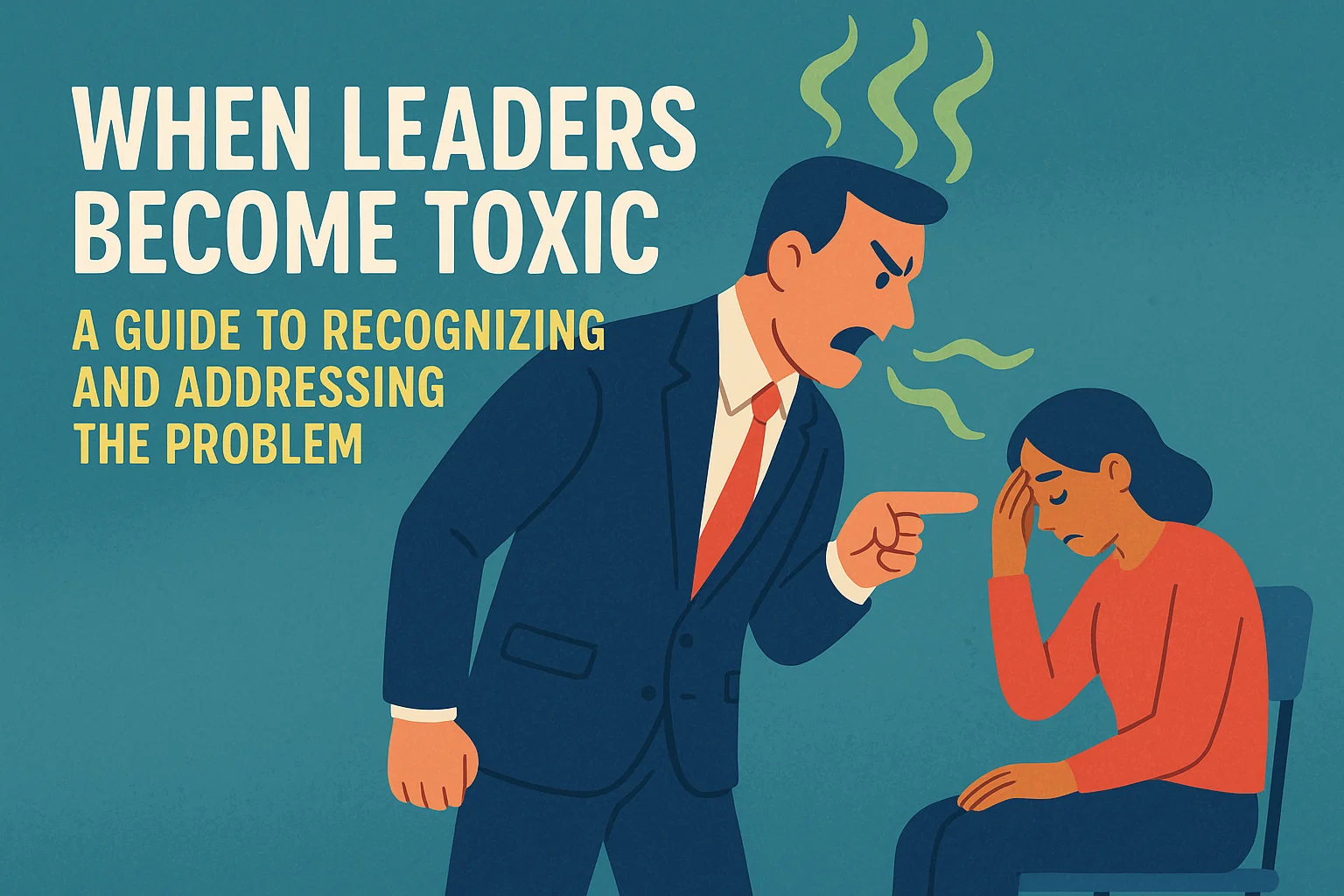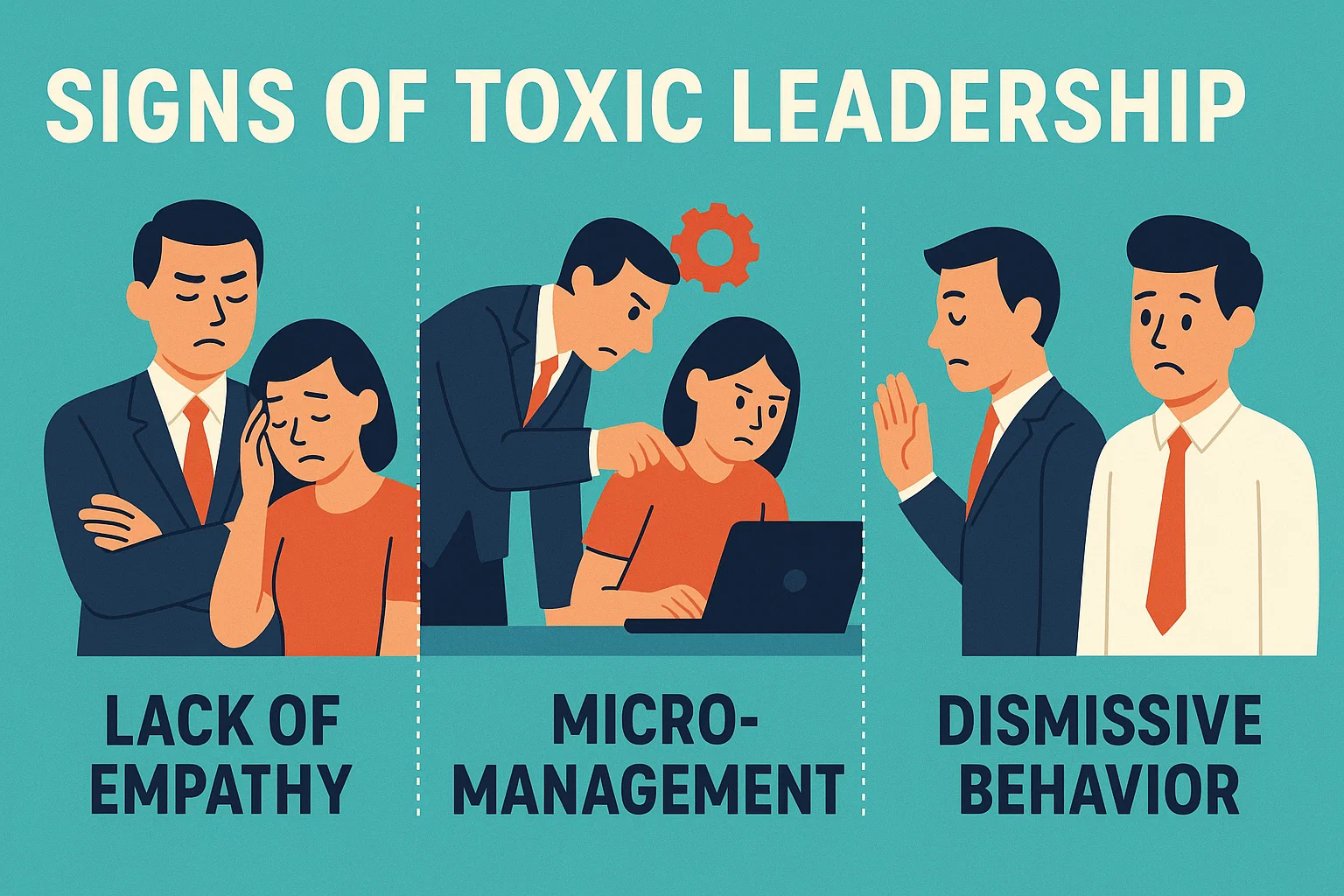When Leaders Become Toxic: A Guide to Recognizing and Addressing the Problem

If leaders are highly skilled and appear to be successful, why is their toxic behaviour a problem? What's wrong with tolerating or enabling leaders who are toxic? If they are doing great things, what is the problem?
As a society, we have long been conditioned to view strong leadership as the key to success. However, when that leadership becomes toxic, the consequences can be severe. According to a survey conducted by Harvard Business Review, 58% of employees have experienced abusive behaviour at work. This includes being subjected to insults, humiliation, and even threats. While this type of behaviour may be tolerated in the short term, it can have a significant impact on mental health and well-being in the long run.
Toxic leadership can take many forms, but common traits include a lack of empathy, a tendency towards micromanagement, and a refusal to take responsibility for mistakes. Such leaders create a culture of fear and distrust, which can lead to high turnover rates, low morale, and decreased productivity.
Not only does toxic leadership negatively impact the mental health of employees, but it can also diminish empathy in the workplace. A study published in the Journal of Applied Psychology found that leaders who exhibited narcissistic traits were less likely to recognize the needs and feelings of others. This can create a toxic environment where employees feel undervalued and unsupported.
“The best way to find yourself is to lose yourself in the service of others.” — Mahatma Gandhi
Toxic leadership, on the other hand, is self-serving and puts the interests of the leader above those of the team. This can lead to a lack of trust and a breakdown in communication, which can ultimately harm the organisation as a whole.
The Cost of Ignoring Toxic Leadership
Employee Turnover: One of the key consequences of toxic leadership is employee turnover. When employees are unhappy with their leaders or the work environment, they are more likely to leave the organisation. This can be costly for employers, as they must spend time and resources recruiting, hiring, and training new employees.
Decreased Productivity And Performance: Toxic leadership can also lead to decreased productivity and performance. When employees feel disengaged or unsupported, they are less likely to be productive and efficient.
Negative Impact On Team Dynamics: Another consequence of toxic leadership is the negative impact on team dynamics. Toxic leaders often create a hostile work environment that can cause conflicts and tension among team members.
Legal and Ethical Implications: Finally, toxic leadership can have serious legal and ethical implications for organisations. Leaders who engage in unethical or illegal behaviour can create legal liabilities for their organisations.
Signs of Toxic Leadership

Toxic leadership can be subtle and difficult to recognize. While some leaders may be overtly abusive or controlling, others may exhibit toxic behaviour in more nuanced ways.
- Lack of Empathy: Toxic leaders may be dismissive of others' concerns or even intentionally hurtful in their interactions.
- Micromanagement: Micromanagers attempt to dictate every aspect of their team's work, leading to demotivation.
- Dismissive Behavior: Consistently ignoring the concerns or opinions of team members erodes trust and collaboration.
Recognizing the signs of toxic leadership is the first step towards addressing the issue and creating a healthier work environment.
Impact of Toxic Leadership on Organisation
Toxic leadership doesn't just affect individuals; it can also have long-lasting consequences for the entire organisation.
Frequently Asked Questions
What is toxic leadership?
Toxic leadership involves behaviors like micromanaging or bullying that harm team morale and productivity.
How can I recognize toxic leaders?
Look for signs like lack of empathy, poor communication, or fostering fear-based environments.
How does coaching address toxic leadership?
xMonks’ coaching helps leaders develop self-awareness and healthier leadership styles.
Who is affected by toxic leadership?
Teams, employees, and organizational culture suffer from toxic behaviors.
How can I address toxic leadership?
Engage with xMonks’ ICF-accredited programs to learn strategies for positive change.




.png)